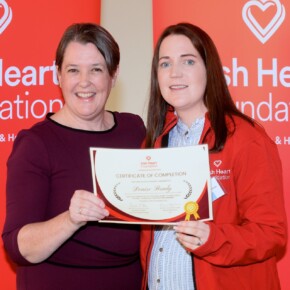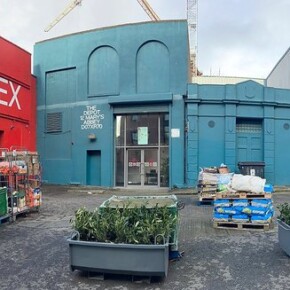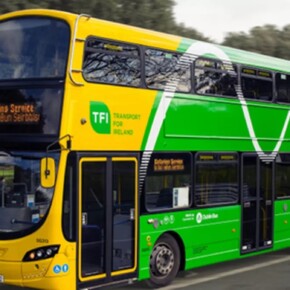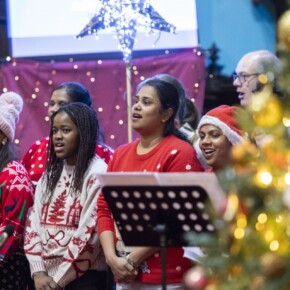Go Dutch: O’Gorman’s Green/Left proposal has precedent
Mike Finnerty 25 Sep 2024
As anyone with even a passing interest in European politics knows, Dutch politics is infamous for how messy it is.
In the land of Marco Van Basten, coalitions are the rule instead of the exception and everyone gets a bite of the apple.
In The Netherlands, a party needs to attain just 0.67% of the vote to win a seat in parliament.
To that end, 15 different parties are represented in the Dutch House of Representatives.
Last November, the Dutch went to the polls after the previous government collapsed over migration, with far-right firebrand Geert Wilders’ party, PVV, topping the polls on 37 seats.
After a short (by Dutch standards) government formation process, May saw the unveiling of the new Dutch government; the PVV, the VVD (think the Dutch version of Fine Gael), New Social Contract (Christian democrats, think the rural Fianna Fáil base), and BBB (an agrarian party with a social conservative streak, not too dissimilar to Independent Ireland).
That election was historic not only for producing the most right-wing Dutch government in decades, but for what happened elsewhere on the ballot.
In second place on 25 seats, and now forming the role of opposition, was GroenLinks-PVDA, or to give it the English title, GreenLeft-Labour.
What happened across the North Sea might serve as a blueprint for the Irish centre-left in the upcoming general election.
Prior to the Dáil’s return last week , and during the Green leadership election over the summer, Roderic O’Gorman stated his desire to jointly negotiate with the Social Democrats and Labour on key policy issues in the aftermath of a general election.
He has expressed a desire for all three parties to negotiate as one after a general election, but not during the general election campaign itself.
Speaking to reporters at the party think-in, he said he would be happy to “engage with parties with like-minded positions to us on supporting children and families. It would give us the strongest position to get policies implemented.”
“I will talk initially to parties that are close to us in terms of policy, but I remain open to talking and working with all parties to negotiate a programme for government, but it has to be one centred on Green policies.”
This backs up previous comments given by O’Gorman.
Speaking to the Irish edition of The Times in June, the Dublin West TD said “after the general election I would like to see the parties of the centre-left, parties who are willing to take on the responsibility and the risks of going into government, to come together.”
“We will see if there is an agreed set of principles that can be hammered out and use that, and use the strength of those greater numbers to secure a very strong programme for government from other political parties.”
O’Gorman added, “our three parties could deliver more – but only if we form a progressive alliance after the general election, and I’d look to make sure that happens.”
At present, the three parties have a combined 24 seats in the Dáil; the next government will need 88 Dáil seats to attain a majority.
Based on current polling, the three parties would return somewhere between 15 to 20 TDs between them, making them a powerful bloc in government formation talks.
For her part, Holly Cairns has said that her party are “very clear that we want to go into government.”
“Our aim is to go into government, but we won’t go into government for the sake of it to make up the numbers. What we want is to see the biggest mandate for the Social Democrats in government as possible.”
Current opinion polls show that Sinn Féin is in desperate need of a coalition partner, as are Fianna Fáil and Fine Gael.
A potential centre-left grouping could prove to be the kingmaker.
While much has been made of a potential Labour/Social Democrats merger, (if only so we could start calling them the LSD Party in articles), there may be some sense in the Greens and Labour deepening cooperation.
Going back to the Dutch example, the merger between the Greens and Labour’s Dutch counterpart was borne out of poor election results.
In 2017, the PVDA plummeted from 38 seats to nine after propping up Mark Rutte’s VVD following the 2012 election.
To add insult to injury, GroenLinks overtook PVDA by winning 14 seats, while the left-wing Socialist Party also won 14 seats.
A traditionally social democratic party being punished by voters for propping up a centre-right liberal party and being overtaken on their left? Where have we heard that before?
In 2021, PVDA stayed stuck on nine seats, while GroenLinks fell from 14 seats to 8.
Following the March 2021 election, GroenLinks leader Jesse Klaver (who, it must be said, has more than a passing resemblance to Simon Harris) pushed for his party and PVDA to join forces and worked closely together over the course of the next two years, ultimately fighting the next general election as one force.
Klaver believed that the Dutch left had a much better chance when it was united, and they had a common enemy in the likes of Geert Wilders on the far-right and Mark Rutte representing the milquetoast liberal establishment.
In the summer 2023, 92% of GroenLinks voters and 88% of PVDA voters approved of a joint campaign and manifesto, which paved the ground for their second place performance in that year’s general election.
Their general election candidate was former European Union heavyweight Frans Timmermans, best known for being Ursula Von Der Leyen’s number two, the godfather of the European Green Deal and a leading light of Dutch social democracy.
In June’s European elections, the grouping won 8 of the 31 Dutch European Parliament seats, becoming the largest Dutch grouping in Strasbourg.
The project, once dismissed as a pipe dream, has now solidified itself firmly in the quicksand nature of Dutch politics.
In a new general election, if the Irish centre-left could hash out a set of common policy agreements and potentially prop up a Sinn Féin-led government, that might be an easier pill to swallow for progressive voters as opposed to another five years of Fianna Fáil and Fine Gael.
An outright merger between any combination of the three Irish parties is unlikely – but negotiating as one in government formation talks could be on the table.
With the Social Democrats likely to be the biggest party out of themselves, the Greens and Labour following the general election, the ball is now firmly in their court.
Will they tack left and plump for Sinn Féin? Or will they look to consolidate the centre-left vote? Their participation in the process would be make or break.
Getting them to agree on a team-up with the Greens and Labour will be a test; they will surely demand that as part of government negotiations, the three parties must agree to not back up a coalition involving Fine Gael or Fianna Fáil.
The Soc Dems are turning 10 next year, with a decent chunk of their elected reps starting political life as Labour councillors or TDs.
The party spawned from frustration with Labour propping up an austerity-era Fine Gael government, and has made being antagonistic towards Fine Gael a major part of their identity.
Still untainted by the stain of coalition, the Social Democrats will now be asked to put a lot of trust in the Greens and Labour and then pray those two don’t go back to their old ways.
Following the collapse of the proposed left-wing alliance on Dublin City Council in June, the Social Democrats are in a loose opposition pact with Sinn Féin, People Before Profit and left-wing independent councillors while Labour and The Greens are part of the ruling coalition involving Fianna Fáil and Fine Gael.
At this stage, the Greens need the Social Democrats more than the Social Democrats need them.
It is still entirely possible for the Greens and Labour to hammer out an agreement should the Soc Dems exit the equation (indeed, one less moving part in multi-party negotiations is always advisable), but would the marriage of green and red prove to be a marriage of convenience as opposed to a marriage of passion?
If they wish to pursue this path, there is precedent elsewhere in Europe; just look for the massive cloud of smoke beside Germany,











